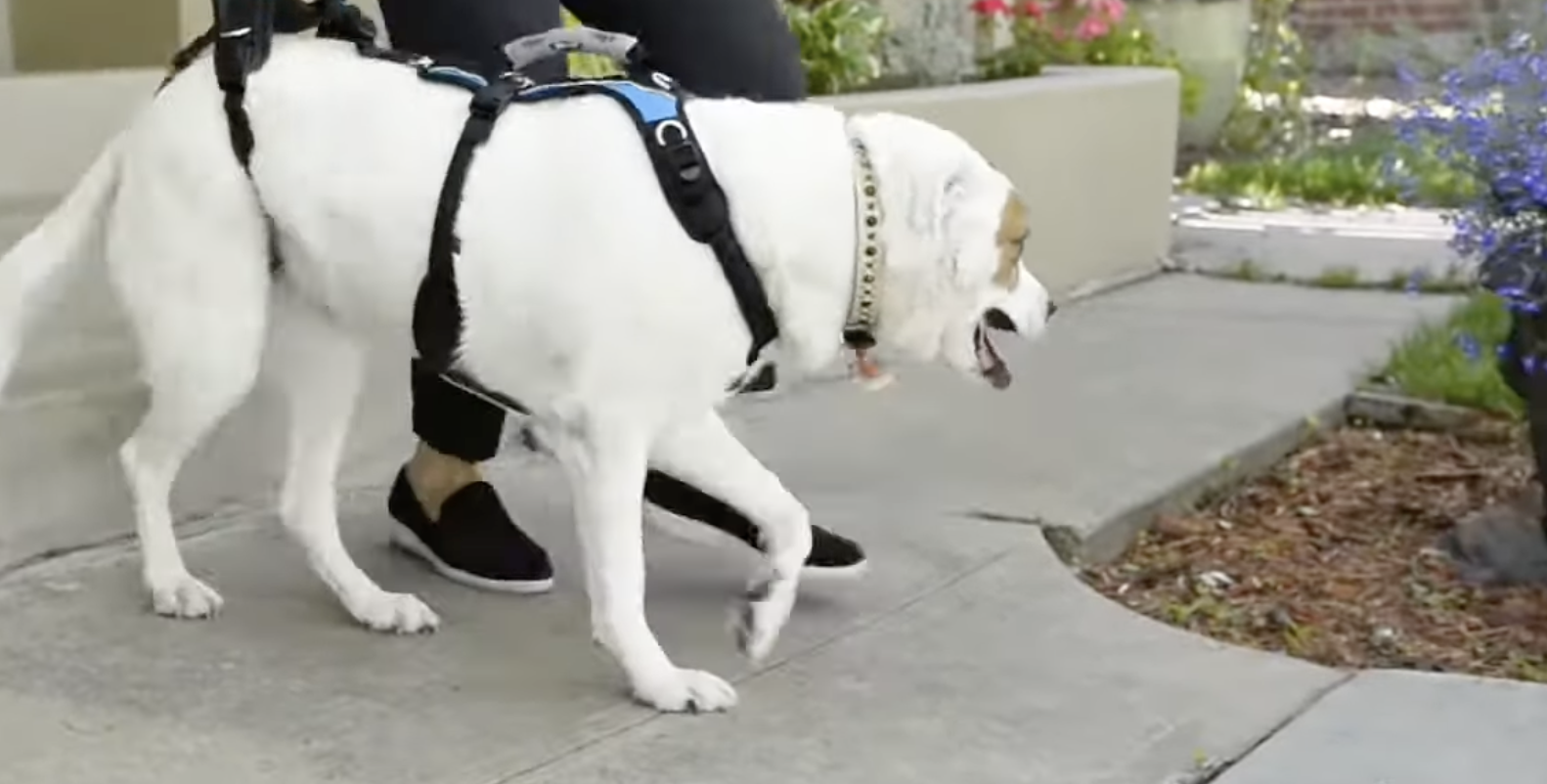Every dog has different needs, both physical and behavioral, that’s why choosing the right gear can be challenging. When navigating recovery and rehabilitation with your pet you may want to consider a couple of factors when making that choice.
Collars are wonderful for easy identification but should not be used as a primary means of walking or control if your pet has any back or neck injuries. You may want to consider leashing your pet to a harness instead. The same applies to prong collars or martingale collars. If your pet has behavioral challenges you may want to consider altering your training to allow for the neck and back to be protected from harm.
Canine shoulders are very muscular as they are the powerhouse of the dog and allow for forward momentum. As such, we need to allow for a full and natural range of motion. Many of the popular “no-pull” harnesses purposefully block range of motion to inhibit pulling. While well intentioned, this leads to stress and compensatory changes on the body when in motion. This is especially true of cases of elbow dysplasia and tendinopathies of the shoulder. Aim for a well fit, ergonomic shaped body harness. The following pictures show the difference between a restricted harness and one that is designed to allow for natural movement. Look for harnesses which mimic the line of the shoulder blade, and avoid those that cross the shoulder at a perpendicular angle. Some of our favorite brands include Ruffwear, Wild-One, Help-Em-Up, and more, check out our resources page for links.
Image: Chris Zink, Canine Sports Medicine, 2017

Should your pet require more assistive support, the same theories apply, however in these cases the ideal gear should allow for specific functions. The Help ‘Em Ep Harness is a favorite among rehabilitation professionals as it allows for assisted, natural posturing during eliminations, a supported spine when lifted in the device, it is heavy-duty and comes in all sizes (up to 120lbs +) and it’s washable! Traditional assistive devices such as slings are appropriate but tend to be tricky to use and can place direct pressure on the bladder when lifting your pet.
There are many other assistive devices on the market for a paraplegic pet which may be helpful to you. Remember to speak with your veterinarian or rehabilitation professional when considering which device is ideal for your pet.
Lara Dellar, CCRA
Recent Comments